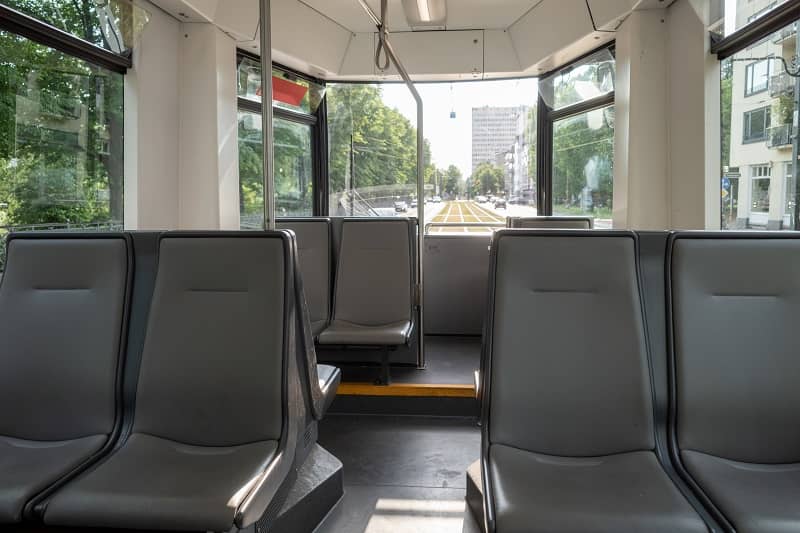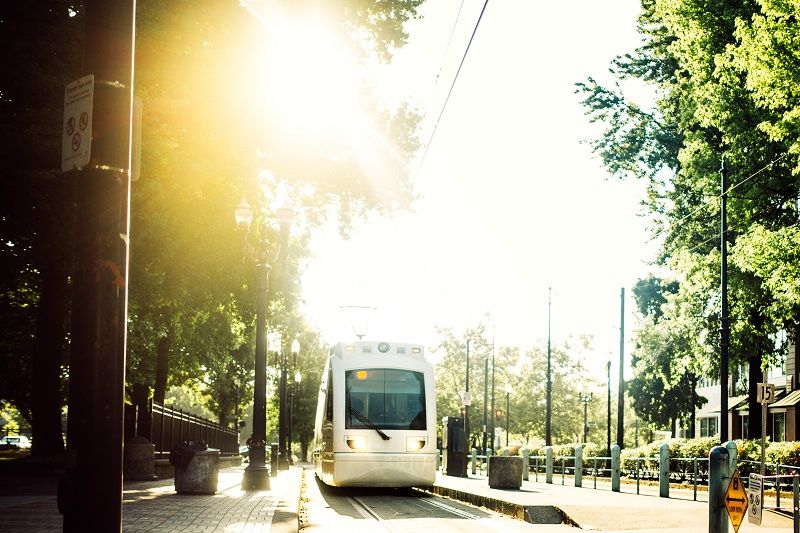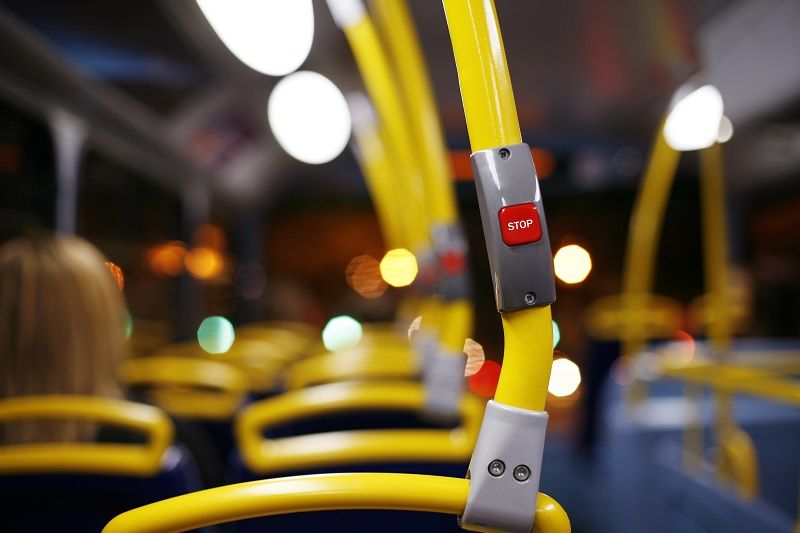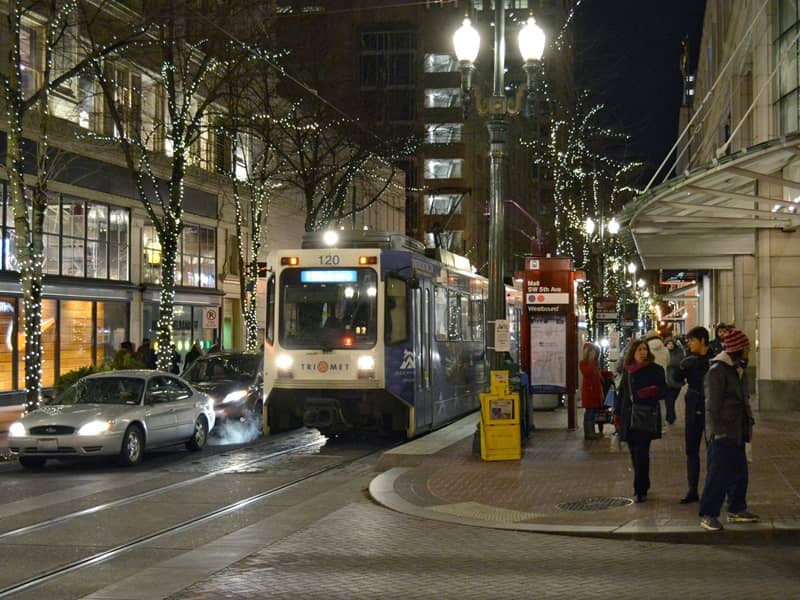$125 Million in General Obligation Bonds for TriMet
By John A. Charles, Jr.
October 11, 2010
Measure 26-119 is being billed by TriMet as a bond measure to help improve bus service for handicapped riders and the elderly. Indeed, at the August meeting of the TriMet board, roughly a dozen handicapped individuals were brought in by the TriMet staff to testify in support of the measure. After a short discussion and virtually no due diligence, the TriMet board voted unanimously to place the measure on the November ballot.
However, a careful reading of the ballot title indicates that bond funds will not be restricted to bus improvements. TriMet management will have full discretion to spend the funds on any capital project. Moreover, the bus projects TriMet is promising to undertake with these funds will only cost $82 million at most, leaving $43 million leftover for undesignated uses.
Given that the TriMet staff announced in July that federal funding for the Milwaukie light rail project will only be 50%, rather than the hoped-for 60%, it’s clear why this ballot measure was rushed to the board for the August meeting. There is a high probability that bond revenues will be used to backfill any shortfall in local match money for both the Milwaukie light rail project and the Lake Oswego-to-Portland streetcar project.
Analysis
The text of Measure 26-119 as it will appear on the November ballot reads:
“Authorize bonds to improve transit, particularly for elderly and disabled.”
“Question: Shall TriMet issue $125 million bonds to improve transit services and access for elderly riders and people with disabilities?”
There is nothing in either the summary statement or the question presented that limits TriMet’s discretion to use some of these funds for light rail and/or streetcar projects. The first clause, “bonds to improve transit”, defines the purpose; the modifying clause, “particularly for elderly and disabled”, is subsidiary. TriMet can and will argue that light rail and streetcar construction improves “transit services and access” for elderly and handicapped riders.
If the agency had actually intended to limit bond funds to improve bus service, it would have stated that explicitly in the ballot title. For instance, the title could have read:Authorize bonds to improve bus service, particularly for elderly and disabled. The reason such a specific description was not used is that TriMet management wants to reserve the maximum discretion possible about how the funds are spent.
In particular, the Milwaukie project is on life support. When TriMet enters final negotiations with the FTA regarding a full-funding grant agreement (FFGA), which is estimated to be signed in June 2012, it will need a hole card to absolutely guarantee the local capacity to meet the 50% match. Since commitments from Portland, Clackamas County, and Milwaukie are all reliant on the use of urban renewal “tax increment financing” that is far from guaranteed, a voter-approved measure for General Obligation (G.O.) bonds of $125 million for “improved transit services” likely will be that card.
If approved by voters, some of the Measure 26-119 money certainly will be spent to replace old buses and to improve bus shelters. But according to TriMet’s official fact sheet, the agency is only promising the following: (1) to improve safety and access “at about 300” bus stops; (2) to replace “up to 100” old LIFT vehicles used for transporting handicapped riders; and (3) replace “at least 150” of the oldest buses in the fleet.
According to data provided by transit operators in Wilsonville, Sandy, and Vancouver, the average costs for such improvements are $8,000-$10,000 per bus shelter improvement; $45,000-$95,000 per vehicle for LIFT buses; and $375,000-$460,000 for 37-45 seat buses.
If we take the high end of these estimates, making all the purchases would only cost $81.5 million. That still leaves $43.5 million leftover. Thus, at a minimum the TriMet board did not do its cost estimates properly. More likely, the budget was padded to provide a slush fund for use on the Milwaukie light rail project, the Lake Oswego streetcar project, or anything else the TriMet management team wants.
Moreover, TriMet claims that buses less than 5 years of age cost roughly $30,000 per year less to maintain than buses older than 15 years. That means that if TriMet actually buys 250 new buses as promised, the agency would save roughly $37.5 million in operating costs over the first five years, with declining levels of savings in years 5-15. Those savings will immediately be fungible for TriMet, meaning they can be spent on anything.
Quite apart from these concerns, there are other reasons why voters should be skeptical of this measure:
- Total operating and non-operating revenue (which includes passenger fares, payroll taxes, cigarette taxes, and operating grants) went up 6.5% last year for TriMet and has gone up every year since 2003. This is in sharp contrast to the agency’s public assertions that the recession has “reduced” revenues. In fact, since 2003, total operating/non-operating revenues for TriMet have gone up from $279 million in 2003 to $434 million in 2010, an increase of 56% (or 31% after accounting for inflation). This steady increase should have been used to incrementally replace older buses.
- The reason this didn’t happen is that TriMet’s operating expenses have gone up from $346 million in 2003 to $558 million in 2010 – a 61% increase (36% in real terms) – and this does NOT account for liabilities for pensions and “other post-employment obligations” (OPEB), which get pushed off current-year books into an amorphous category of “Unfunded Actuarial Accrued Liabilities” (UAAL), which must be paid at some time in the future. TriMet’s cumulative UAAL for pensions and OPEB stood at $1.08 billion as of January 1, 2010, and grows each month because TriMet’s OPEB trust fund has no assets.
- The cost of fringe benefits at TriMet equaled 152% of wages in 2010 – the highest ratio of benefits-to-wages of any transit district in the country. More significantly, the ratio is getting worse every year due to union contracts.
- If TriMet had reduced the cost of fringe benefits to “only” 80% of wages beginning in 2008, the agency now would have $201 million in surplus general fund dollars.
- TriMet claims in the Voters’ Pamphlet that “This measure replaces the existing bond and it is not expected to increase property taxes beyond what homeowners currently pay….” This is misleading. The bonds approved in 1990 (to help pay for Westside light rail) will be paid off in 2012. In the absence of any further bond votes, property taxes would then go down for every property owner in the region. If Measure 26-119 is approved, it will cause a tax increase. To compare the effect of 26-119 with property taxes currently being paid is disingenuous.
TriMet has created a financial crisis for itself as a result of two miscalculations: (1) long-standing agreements in support of the most generous employee compensation package in the industry; and (2) construction of rail projects that are at least 1,000 times more expensive than bus alternatives. Neither commitment is sustainable.
Measure 26-119 is an attempted bailout, disguised as a bus-only measure. It is being marketed the same way a magic trick works – through misdirection. At a magic show, the audience follows one thing while the trick is actually performed elsewhere, creating an illusion. All of the promotional material for Measure 26-119 focuses on benefits elderly and disabled riders, while the actual wording of the measure indicates that all of the money would be available for any kind of capital project.











